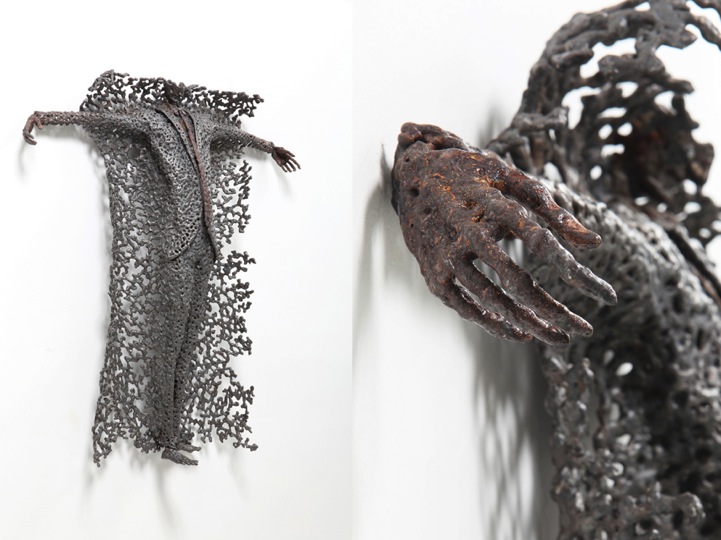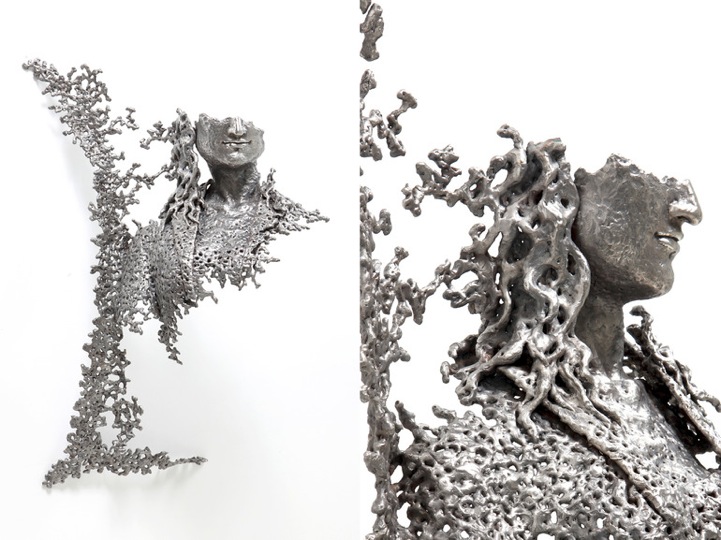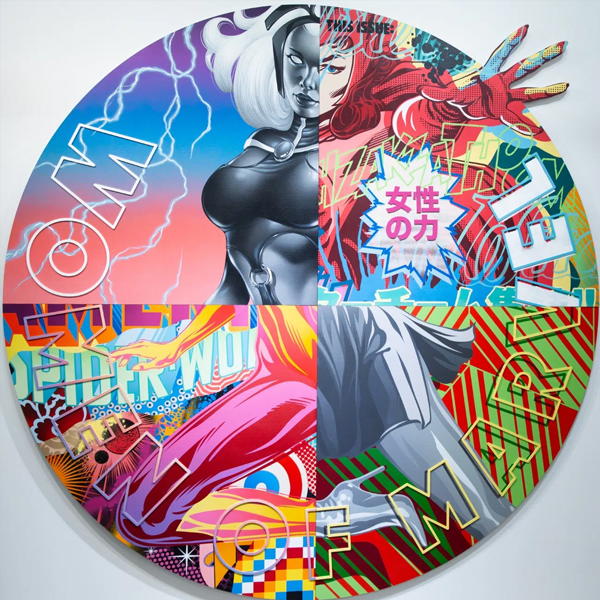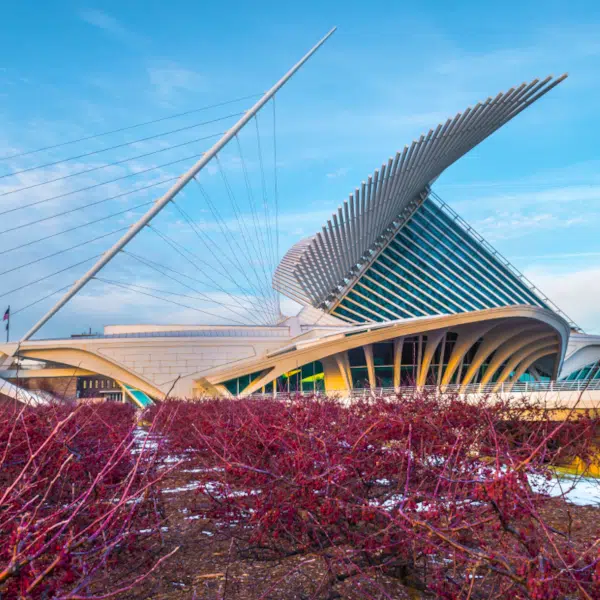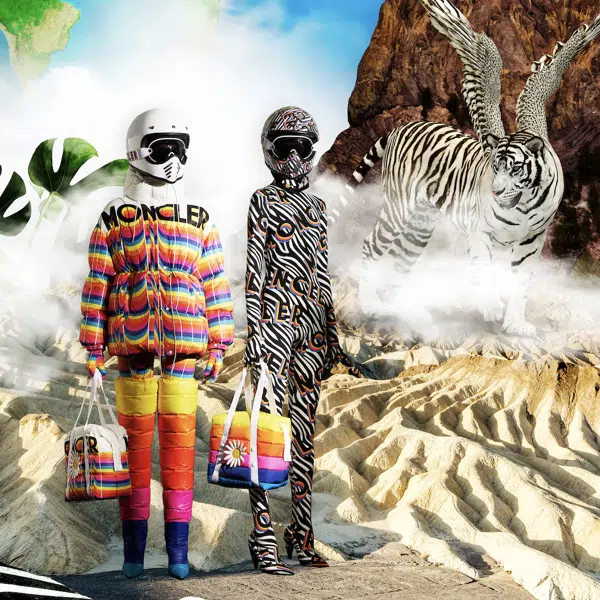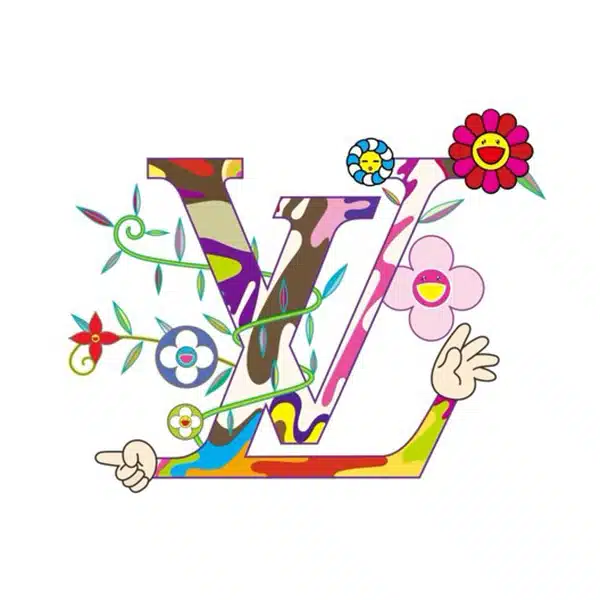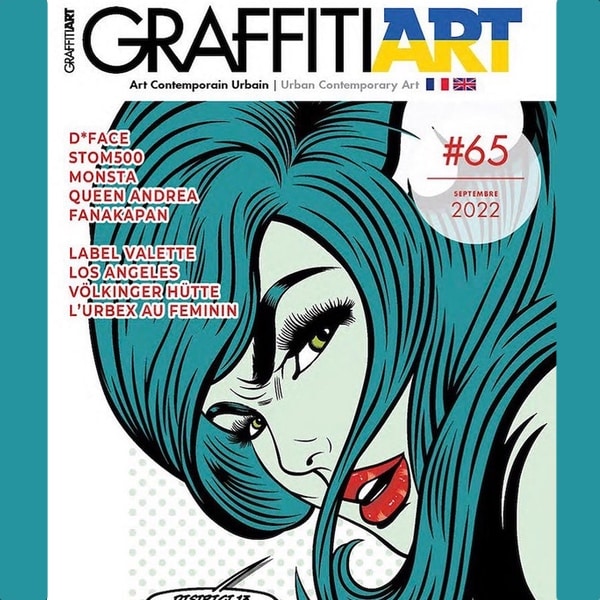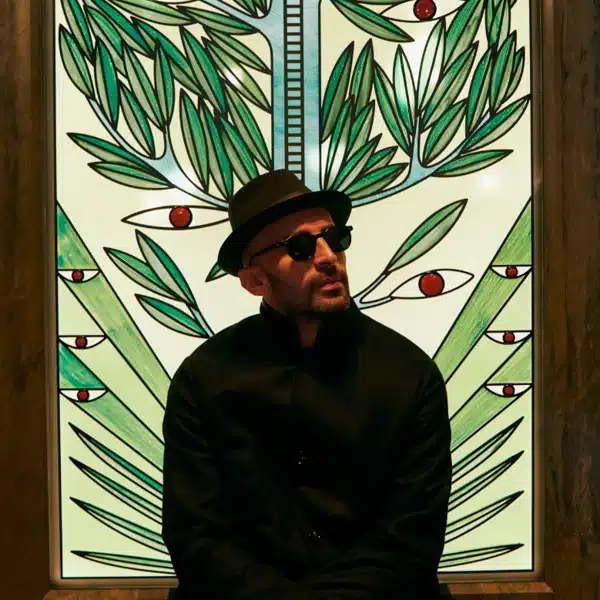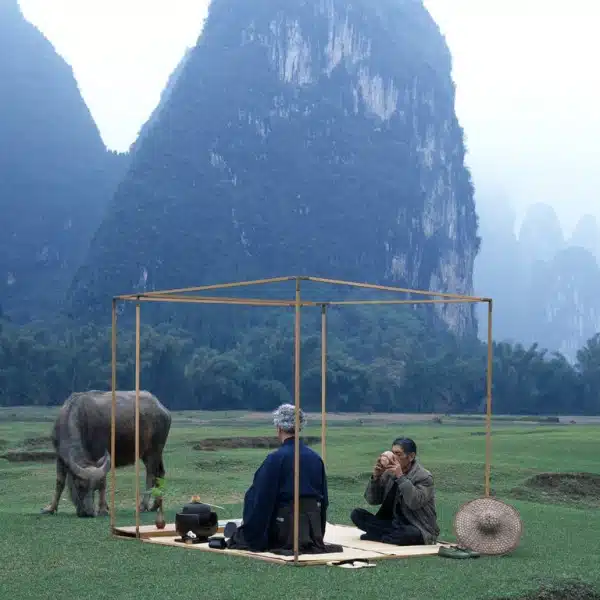
Korean sculptor Seong Gu Lee uses the human figure as his sculptural subject, like so many artists before him, to depict the inner struggles faced by men throughout time. The artist reflects on his own works and notes that “It is not that human beings themselves have changed but that the surrounding environment and cultural elements have significantly changed. Whether ancient man or modern man, I don't think their basic desires or inner worlds are much different.” Lee's vast series of metallic sculptures question life, existence, and the unattainable goal of an artist to reach immortality.
Similar to the figurative sculptures by Matteo Pugliese, Lee's men emerge from walls, missing parts of themselves. Aesthetically the artists' works are quite different, though they both have this underlying theme of incomplete men. In Lee's work, however, there's a strong sense that these fragmented and faceless men are fighting to stay alive, present, and relevant. They're disintegrating right before our eyes, as though dipped a pool of metaphoric acid, representing mortality and the ill fate of “existing” rather than truly “living.”
Lee's sculptures contain layers upon layers of interpretation. Every element of his works have deep significance, right down to the metallic materials they are composed of. The artist explains his reason for working with his chosen elements, revealing a dark side to his works: “Metals have higher heat resistance than other materials when it has been heated. However, once it begins to cool, it cools quite fast and becomes cold as if it had never been hot. I believe this isn't much different from the emotional cycles of contemporary man.”

